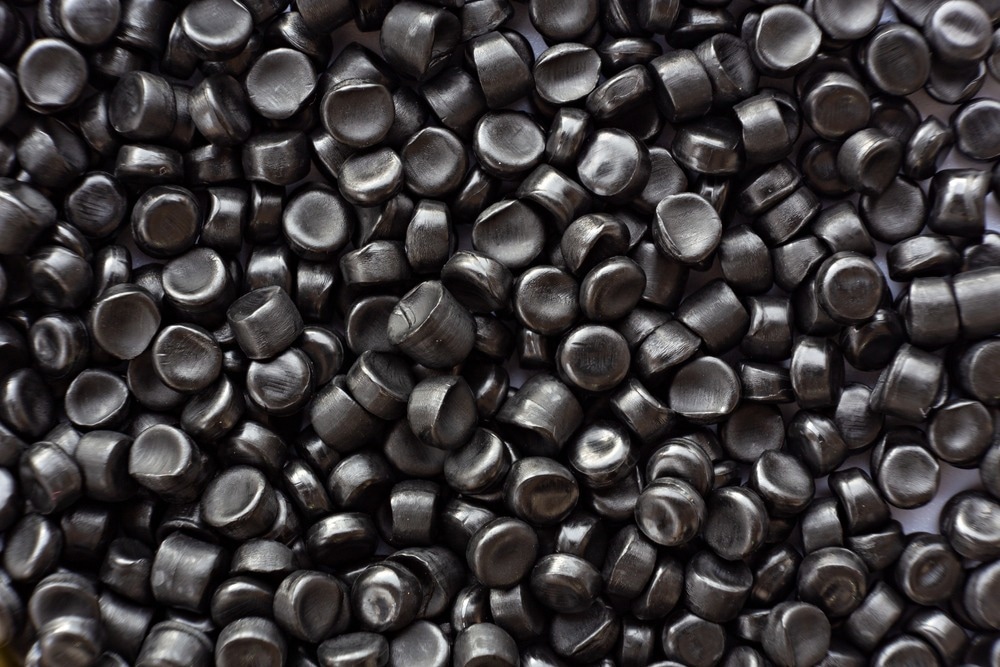A new paper in The Journal of Colloid and Interface Science has explored how solvents influence the rheological behavior of polymeric bead suspensions. The research has been carried out by scientists from PSL Research University and the University of Bordeaux in France.

Study: Solvents govern rheology and jamming of polymeric bead suspensions. Image Credit: Meaw_stocker/Shutterstock.com
Research Background
Suspensions of solid particles dispersed in liquid media are commonly encountered soft matter systems. Suspensions are commercially important, found in products such as paints, cosmetics, cement pastes, and food products, to name a few of their uses.
Hard non-Brownian particles are suspended in Newtonian fluids. Whilst they are simple systems with few constituents, suspensions display complex flow behaviors, density inhomogeneities, shear-thinning and thickening behaviors, and so forth. Understanding these characteristics of suspensions is complex and challenging, with major work by Boyer et al. revealing key information on these behaviors.
Despite recent advances by Boyer et al. and other research teams, full understanding of the rheological and physiochemical behaviors of suspensions is currently limited. Recent studies have observed non-Newtonian behaviors in these systems, with non-straightforward dependence of particle friction coefficients on shear stress revealed in research, for instance.
Theoretical frameworks have been developed in recent years that reveal the factors which influence the rheological behavior of solid particle suspensions and the consequent influence of rheological behaviors on the properties of commercial products. Numerical simulations have played a key role in developing these frameworks.
Amongst the various experimental studies in recent research, the link between the rheological properties of suspensions and microscopic force measurements has been quantitatively described. Measuring interparticle forces and the evolution of microscopic sliding friction coefficients (which can depend on shear stress) and their relationship with normal forces is crucially important for understanding non-Newtonian behaviors in suspensions.
Whilst understanding this connection is critical for developing suspensions with more favorable rheological properties, the relationship between interparticle forces and normal force is still poorly understood. A lack of experimental data limits this understanding, and the underlying physical mechanisms are currently unclear.
The Paper
The research team has specifically studied polystyrene particles. Particles were suspended in air and three different solvents to provide key experimental information on the influence of solvents on the rheological behavior and physical properties of suspensions.
Intimate details on pairwise particle interactions were revealed in the study through the use of state-of-the-art techniques to measure each solvent’s microscopic friction coefficient along with rheological measurements. Thus, how these interactions govern the suspension’s rheological behavior was demonstrated by the authors.
Several particle-scale mechanisms were highlighted in the research, including particle swelling in organic solvents, the role of inertia and colloidal repulsive forces in suspensions with water solutions, and how friction coefficient variations act as a function of load in suspensions of polystyrene particles in silicone oils.
Study Conclusions
The paper revealed that particle properties are strongly modified by interactions between solvent and suspended polymer particles. In all solvents tested (PEG, water, silicone oil), a soft layer was formed on the surface of polymer bead particles, which plays a key role in the rheological behavior of suspensions. The soft layer governs contact properties, which was confirmed by comparing measurements made in solvents and air.
The authors demonstrated that solvents penetrate and swell polystyrene beads, causing the formation of a swollen polymer layer. In PEG, an organic solvent, a polymer “brush” is formed that covers particle surfaces. This layer causes steric repulsion forces. Furthermore, the study demonstrated that microscopic friction coefficients in all solvents are lower than in air, and in the case of PEG, close to zero.
The formation of a swollen layer on the surface of polymeric beads and the consequent repulsive forces in solvents is important for the rheological behavior of suspensions. The negligible friction coefficient encountered in particles suspended in PEG solvent, for instance, produces a system that behaves like a frictionless particle suspension.
In water, polystyrene beads exhibit electrostatic repulsive forces. Interparticle forces are lower than repulsive forces in these suspensions, which provides evidence of a lack of direct physical contact between particles and a frictionless/contactless suspension behavior. If the interparticle force is greater than the repulsive force, friction occurs, affecting the behavior of suspensions.
In Summary
The new study in the Journal of Colloid and Interface Science has highlighted how different solvents govern the rheological properties of solid polymeric bead suspensions. The study confirms the principle that small variations in forces, both normal and tangential, between particles have a profound effect on a system’s rheological behavior, which is a well-established idea.
The quantitative data provided in the study can be used by future researchers to test simulations and numerical models and provides a route for fine-tuning suspension rheology by controlling material chemistry and formulation. Moreover, it highlights the importance of systematically characterizing both tangential and normal forces when testing hard sphere suspensions in Newtonian fluids.
Further Reading
Nguyen Le, A.V et al. (2022) Solvents govern rheology and jamming of polymeric bead suspensions Journal of Colloid and Interface Science [online, pre-proof] sciencedirect.com. Available at: https://doi.org/10.1016/j.jcis.2022.09.074
Disclaimer: The views expressed here are those of the author expressed in their private capacity and do not necessarily represent the views of AZoM.com Limited T/A AZoNetwork the owner and operator of this website. This disclaimer forms part of the Terms and conditions of use of this website.